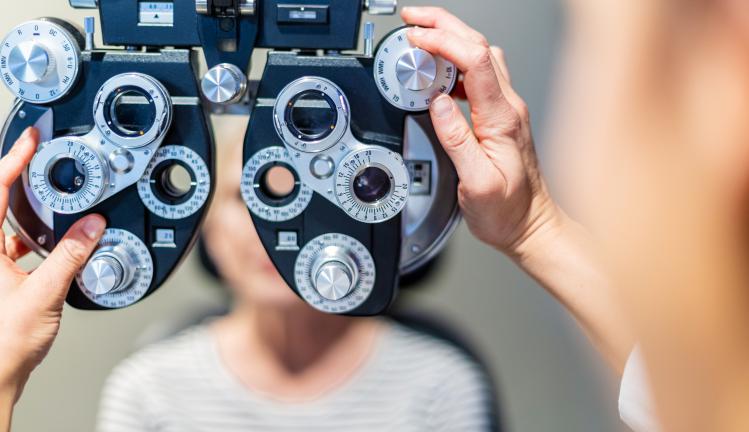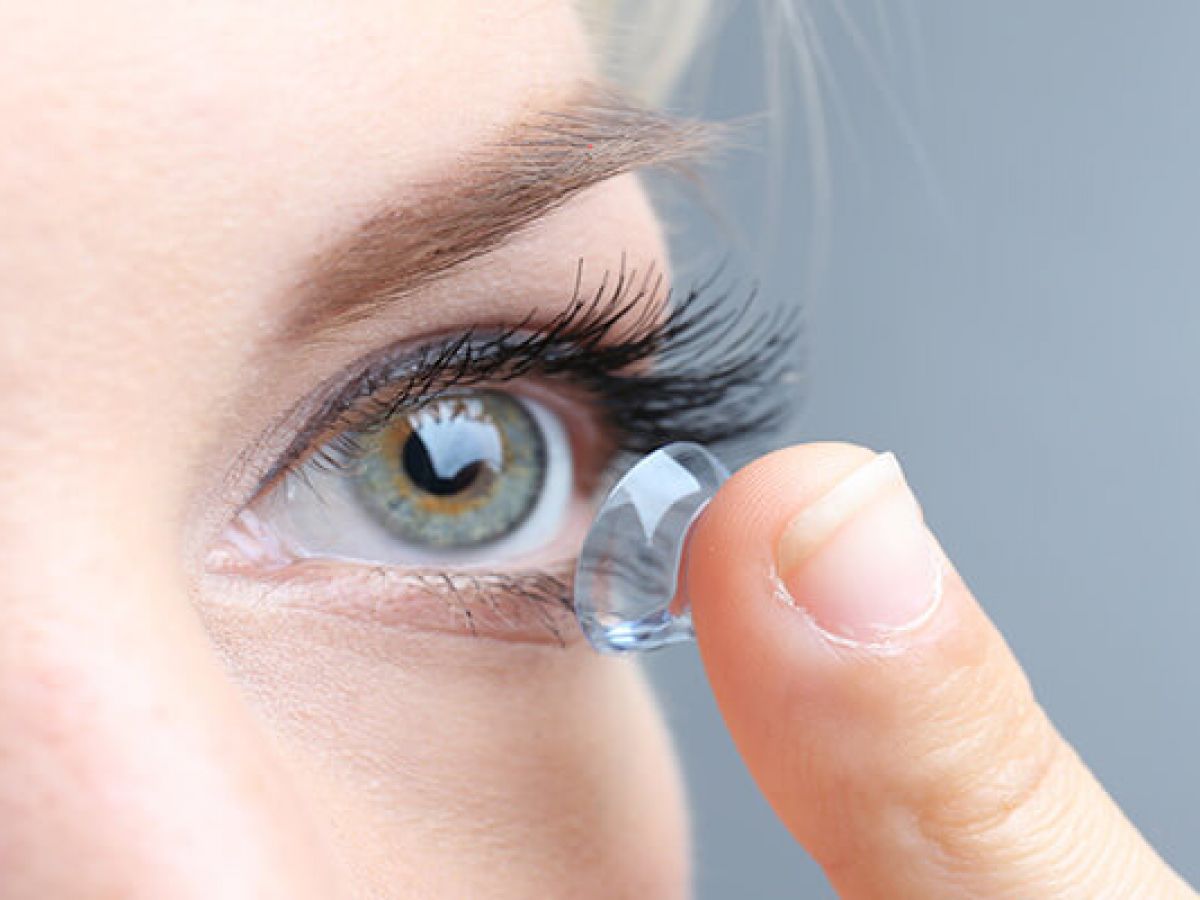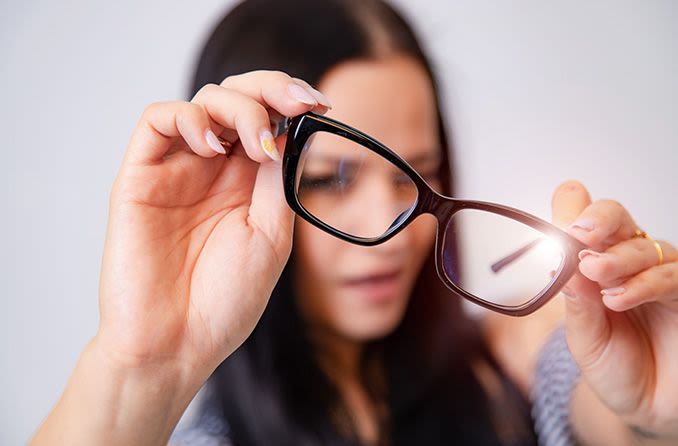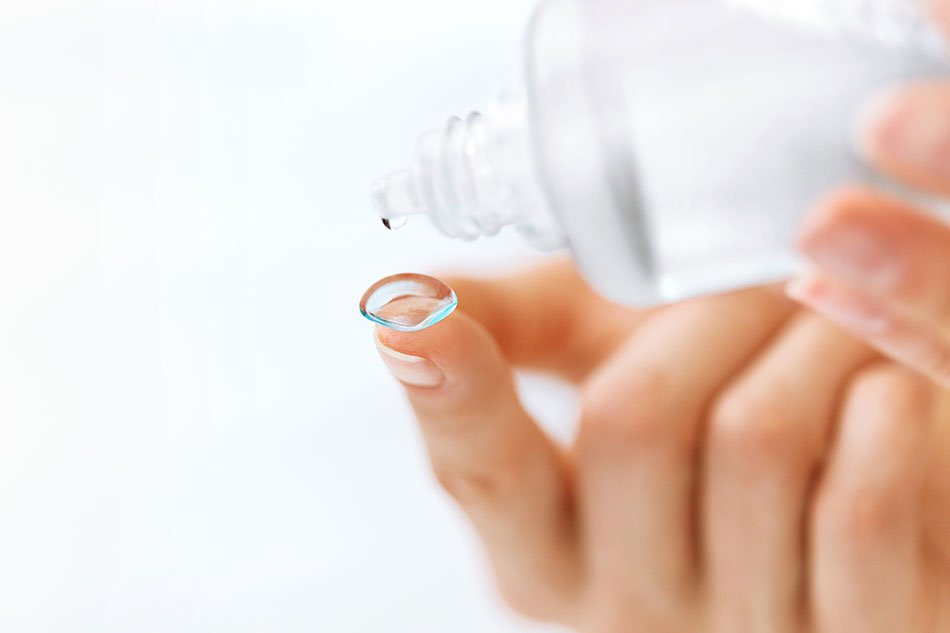Eye Exams
Regular eye examinations are important in maintaining eye health. During a comprehensive eye examination, eye diseases or other abnormalities that are not yet causing symptoms can be detected. Early intervention is crucial in preventing vision loss from a disease such as glaucoma, which may not cause symptoms until significant and irreversible damage has taken place. Early detection of eye problems gives a patient a choice of treatment options, and reduces the risk of permanent damage.
Refractive errors occur when the shape of the eye prevents light from focusing direction on the retina. Blurred vision, double vision, glare, headaches, and eye strain are all common symptoms of refractive errors. Glasses, contact lenses or refractive surgery can correct refractive error.
Millions of people have problems with their vision every year. As we get older the frequency of exams should increase as eye disease becomes more common. Some of these issues can cause permanent vision loss or even blindness and glasses or contact lenses can correct others problems.
Benefits of a Comprehensive Eye Examination
A comprehensive eye exam should be performed once every year. Children should have regular tests to ensure that their vision is normal so that their schoolwork does not suffer. Older adults are at higher risk for eye conditions such as glaucoma, macular degeneration and cataracts. During a comprehensive eye examination, simple refractive errors are detected, and serious eye problems or diseases, including the following, are diagnosed:
- Amblyopia (lazy eye)
- Strabismus
- Eye-tracking difficulty
- Glaucoma
- Diabetic retinopathy
Even in younger, healthy adults who are asymptomatic, a regular eye examination is essential. Serious medical conditions, such as high cholesterol, diabetes and high blood pressure, can be detected, allowing patients to seek treatment early.

The Comprehensive Eye Examination Procedure
A comprehensive eye examination differs from a vision screening. The latter only tests visual acuity, and is commonly performed by a school nurse, optician, pediatrician or other healthcare provider.
In order to evaluate the eyes thoroughly and detect any problems, the following tests are performed:
- Visual acuity
- Visual field
- Retinal examination under pupil dilation
- Slit-lamp
- Tonometry (tests intraocular pressure (IOP))
- Keratometry (measures the curvature of the cornea)
- Refraction
Tonometry checks for the presence of glaucoma, and keratometry for astigmatism. All of the above tests are safe for all patients.
Why Get a Dilated Eye Exam?
To get a better view of the eye’s internal structures, your eye doctor may use dilating drops to temporarily make your pupils larger. Dilating drops usually take about 20 to 30 minutes to start working. When dilated your pupils will be sensitive to light and you may notice difficulty focusing on objects up close. Pupil dilation is very important for people with risk factors for eye disease. It allows for the most thorough evaluation of the health of the inside of your eyes. These effects can last for up to several hours, depending on the strength of the drop used. Once the drops have taken effect, your eye doctor will use various instruments to look inside your eyes. Dilation is important for the doctor to be able to assess vital parts of your eye such as the optic nerves and retina that they are unable to examine otherwise. Without examining these parts of the eye doctors cannot rule out other diseases such as glaucoma, macular degeneration, and diabetic retinopathy. When dilated your near vision will become blurry, and doctors recommend you have someone go with you to drive home however most patients are able to drive. If you have any questions about your appointment, please do not hesitate to call our office
Contact Lens Exam
You will need a contact lens exam to determine your depth perception, visual acuity, and general eye health. Doctors need this examination before they can prescribe contacts. The appointment includes corneal topography and a tear film evaluation, as well as other tests for a comprehensive eye exam. The eye specialist will also show you how to insert and remove your contacts.
How Long Do Eye Exams Take?
On average you will be in the office for a comprehensive exam for about one to two hours depending on your own personal needs. If you need any special testing it may be slightly longer. Most ophthalmic appointments (check for glasses) usually last 45 minutes to one hour.
Possible Treatments
Based on the diagnostic findings of the examination, eyeglasses or contact lenses, medication for infection or inflammation, vision therapy, and vitamins or other supplements may be recommended. In some cases, eye surgery may be necessary.
Common Refractive Errors
The most common eye conditions diagnosed during a comprehensive eye exam involve refractive errors that cause blurry vision. These conditions affect millions of people in the United States, and often get progressively worse as patients age. Refractive errors are easily treated.
Myopia
Also known as nearsightedness or short sightedness, myopia is a condition of the eyes in which nearby objects are clear, and distant objects are blurry. Almost a third of people in the United States have some degree of nearsightedness.
Hyperopia
Also known as farsightedness, hyperopia is a condition of the eyes in which the focus on distant objects is better than the focus on objects closer to the eye, making nearby objects appear blurry. The eye is designed to focus images directly on the surface of the retina; with hyperopia, light rays focus behind the surface of the retina, producing a blurry image.
Astigmatism
Astigmatism occurs when curvature of the eye is irregular. There are two types of astigmatism: corneal, in which the shape of the cornea (the clear covering of the eye) is irregular, and lenticular, in which the lens is imperfectly shaped. Corneal astigmatism is more common. Astigmatism can result in blurred vision at any distance.
Presbyopia
Presbyopia, meaning “old eye,” is a condition in which the eyes lose their ability to focus on close objects. It is considered a normal part of the aging process. Symptoms typically begin when patients are between 40 and 45 years old.
All of these vision conditions can be effectively treated with either eyeglasses or contact lenses. Corrective lenses may need to be used only during certain activities, such as reading, watching television or driving, or may be needed at all times.
Comprehensive eye examinations are essential in checking for vision problems, eye diseases, refractive errors and overall health. How frequently the eyes should be examined is based on the patient’s age and specific circumstances.
When Should I Have an Eye Exam?
For adults, the American Academy of Ophthalmology recommends a baseline eye examination at age 40. This is the time when early signs of disease or changes in vision may occur. If you have an eye disease or if you have a risk factor for developing one, such as diabetes, high blood pressure or a family history of eye disease, you should see an ophthalmologist even if you are younger than 40. If you are 65 or older, you should have your eyes checked every year. The risk of developing age-related eye diseases such as cataracts, age-related macular degeneration, and glaucoma increases after this point.
How Much Do Eye Exams Cost?
Many people have both medical insurance and a separate vision care insurance (VSP, NVA, EyeMed, Davis Vision, Avesis). If you are planning on using your vision care insurance for a routine exam (you do not have any medical or surgical problem) we will make your appointment with our optometrist.
What Should I Bring to my Appointment?
Please bring your insurance cards to every visit as we need to see the card every time you come to be sure it has not changed. If your insurance requires a referral, it is up to you to make sure you have a valid one. We need payment of all co-pays, deductibles & refraction charges at time of visit.
For your appointment at our eye care practice, you should bring along the following:
· New Patient Forms
· Insurance cards
· Payment or Co-payment
· List of medications
· Past medical history and surgeries
· Eye glasses
· Contacts lenses
Contact SightMD today to schedule an appointment with one of our doctors to discuss your vision health at one of our convenient locations!

Bad Habits To Avoid When Using Contact Lens That Can Endanger Your Eyes
Contact lenses can change your world. While many people prefer the look and ease of glasses, others enjoy the freedom…

Are my reading glasses making my eyes worse?
Short answer- No Although we don’t know the exact mechanism by which humans have a decreased ability to focus…

Dos and Don’ts for Contact Lens Wearers
Contact Lenses & Eye Care Contact lenses are a safe and convenient way to correct your vision — as…